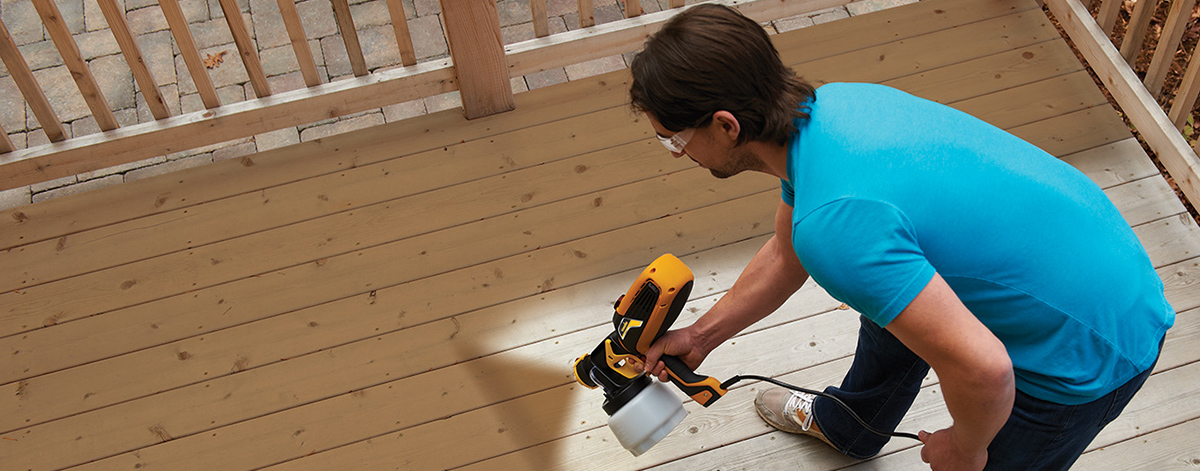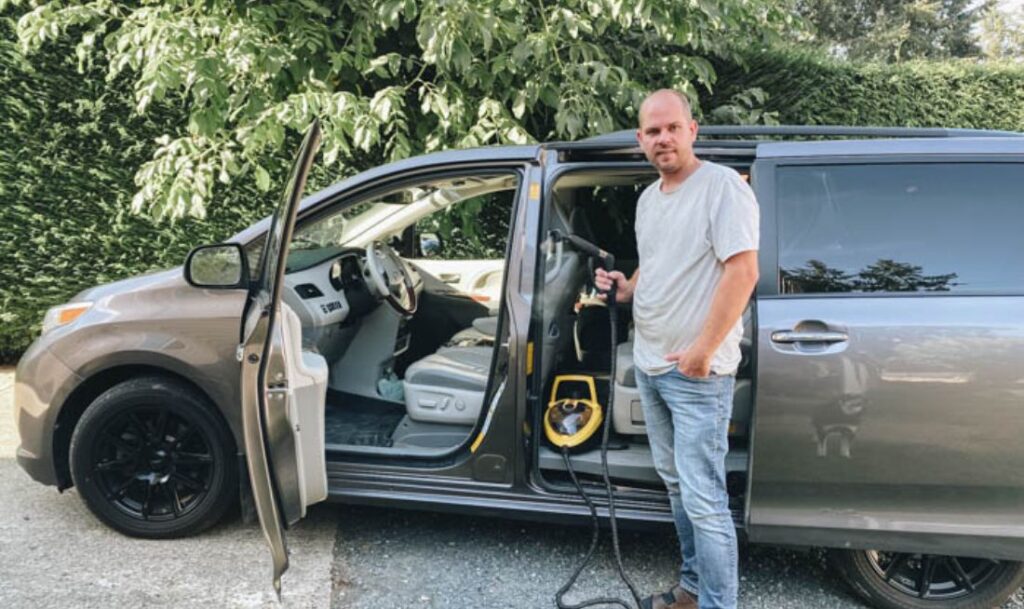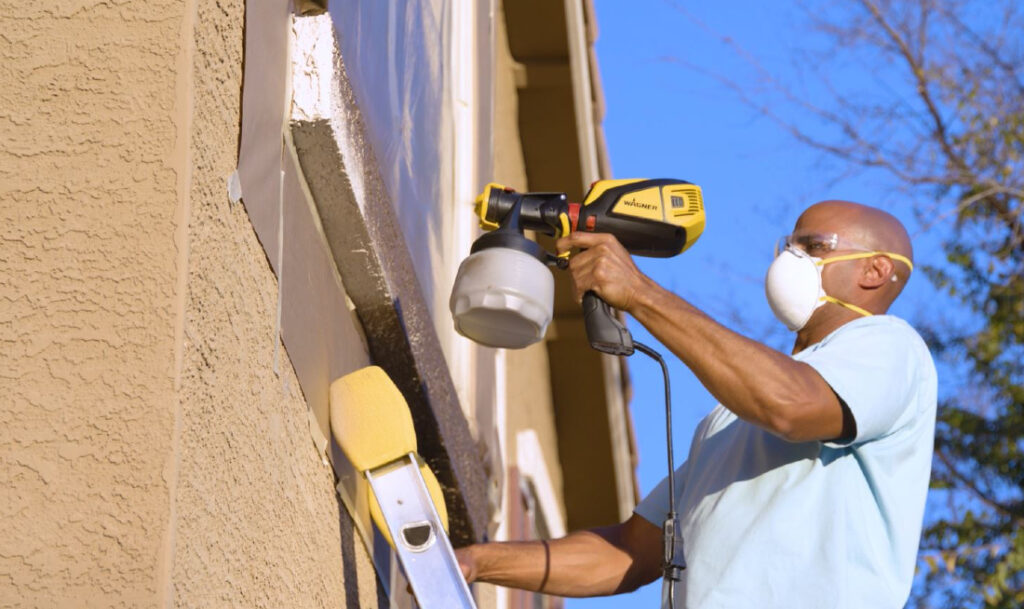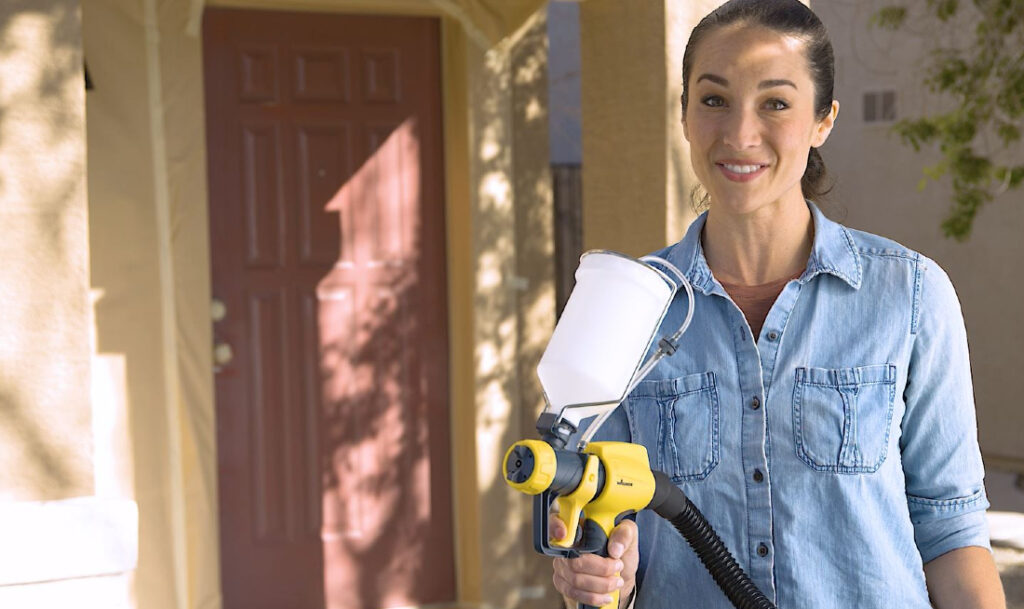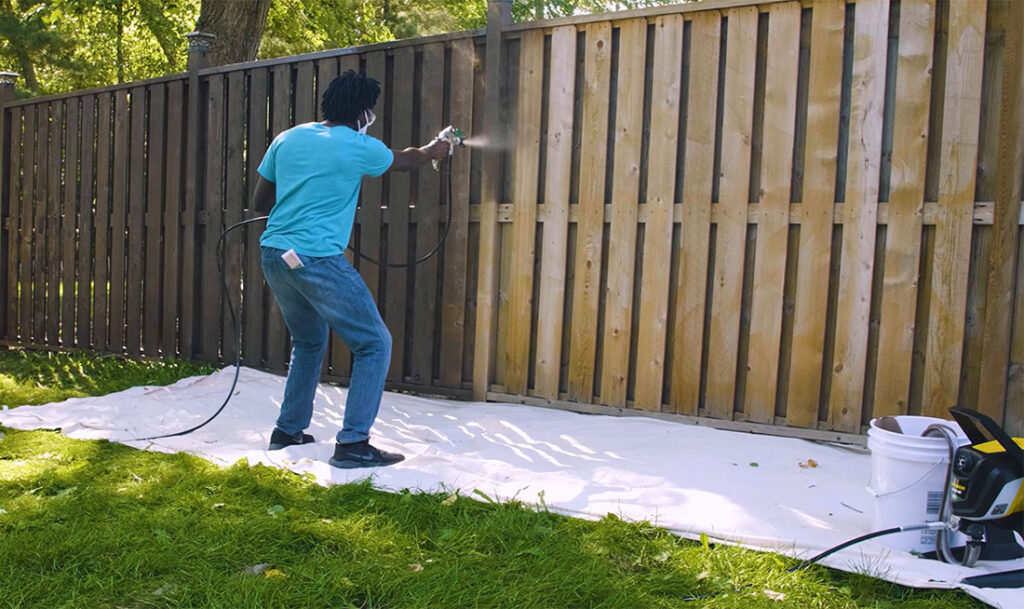Overview

PREPARATION FOR PAINT SPRAYING
Prepping for your spraying project will make your project go smoother & you’ll finish quicker! Before you start spraying with your Wagner paint sprayer, it’s important to be prepared. This includes having all the right items to make your DIY paint spraying project go smoother and learning how to use a paint sprayer before climbing ladders and figuring it out in the air.
Mask with painter’s plastic and tape. It doesn’t matter if you’re painting a room inside, or paint spraying the exterior of your home, we highly suggest covering anything you don’t want to get paint on. This is easy with painters’ plastic found at most hardware or paint stores. Use the painter’s plastic and painters’ tape to mask off windows, doors, floors and woodwork – basically anything you don’t want to get paint on.
Use a ladder to reach the highest areas. We suggest using a ladder where you can reach the highest spots without having to go higher than then 2nd or 3rd highest rung. If you’re unsure on how to use your ladder, make sure to read those safety instructions too. Also, if you’re a commercial or professional painter on the job site, you’ll want to make sure you’re using all equipment in accordance with OSHA guidelines.
Pro Tip: When paint spraying outside, wear a face mask to avoid inhaling overspray, especially on a windy day.
Step 1

LEARN HOW TO USE YOUR PAINT SPRAYER
Practice makes perfect! Before you climb ladders and start paint spraying your house or interior walls, we highly suggest learning how to use a Wagner paint sprayer while you’re still on the ground.
Practice paint spraying using the included Wagner spray poster, and if you need additional practice to get comfortable painting with a sprayer, then large flattened out cardboard boxes work great too. Before you begin spraying paint make sure you’re comfortable painting in both a horizontal and vertical spray path.
Step 2
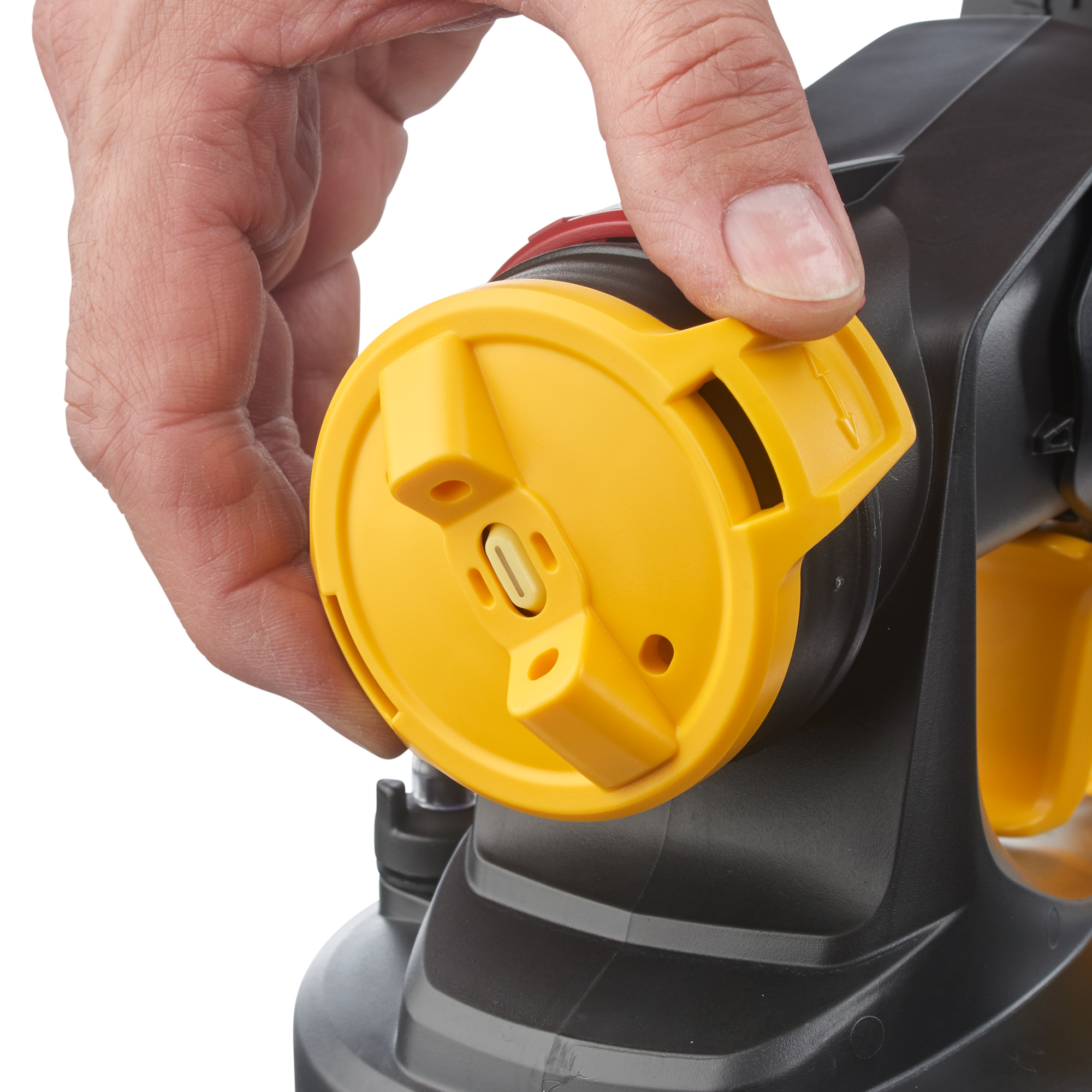
ADJUSTING YOUR PAINT SPRAYER
Familiarize yourself with adjusting the paint spray nozzle. After filling the paint reservoir, you’ll want to practice adjusting your sprayer. The adjustable spray nozzle makes painting with a sprayer easy.
Pro Tip: One of the most convenient things about Wagner FLEXiO Paint Sprayers is your ability to spray unthinned latex or oil-based paint or stains. This makes FLEXiO HVLP Paint Sprayers a popular choice for home and professional use.
Step 3
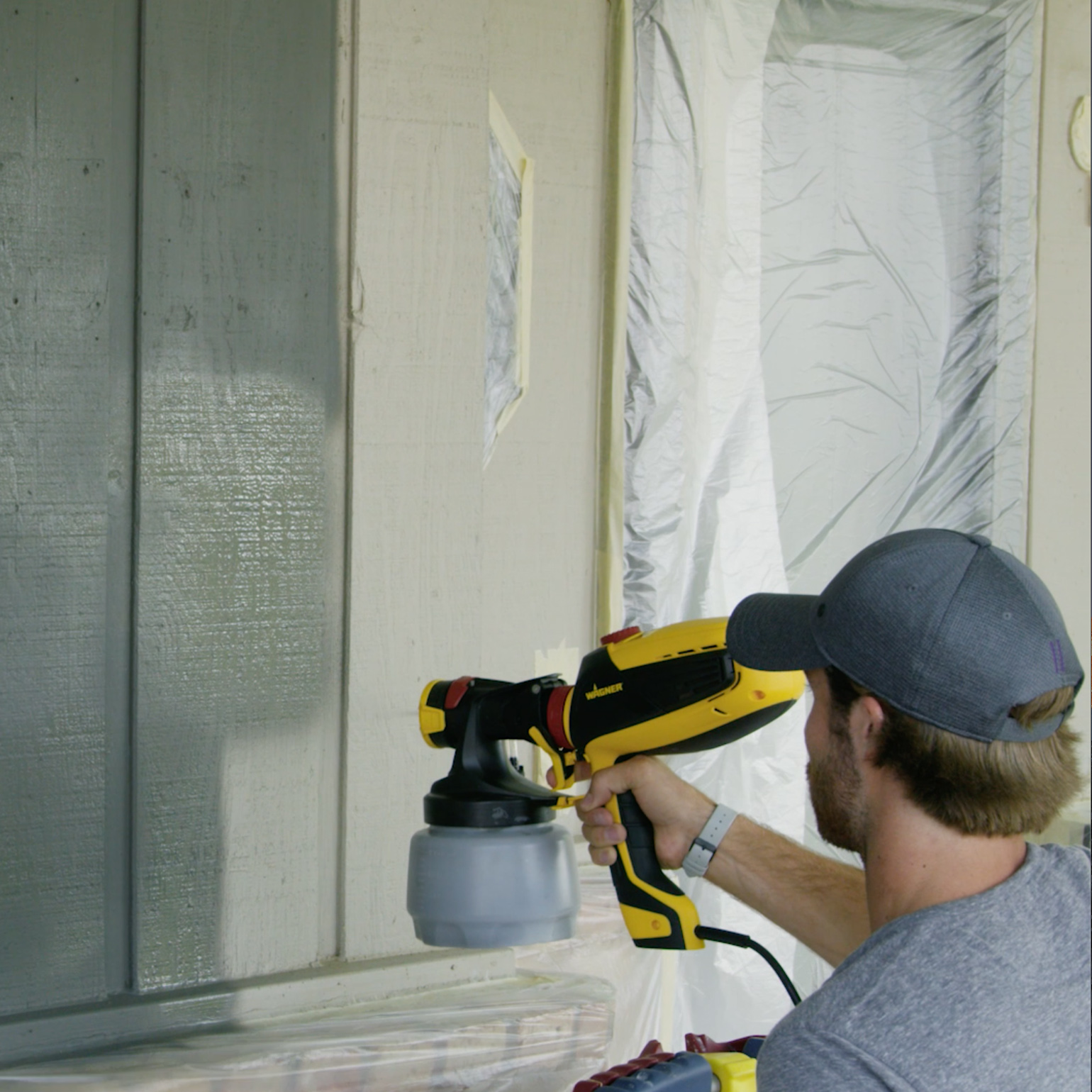
VERTICAL SPRAY PATTERN FOR LATERAL PAINT SPRAYING
If you’re paint spraying side-to-side (left to right, right to left) select a vertical spray pattern. This will produce a tall, thin oval of paint from your paint sprayer. Spray laterally while moving the gun from side to side at a consistent pace, and keeping the tip of the sprayer a uniform 6 to 12 inches from the surface as you spray. Make sure to avoid arcing at the end of your stroke. Adjust the distance and speed of your movement to get full, even coverage from your paint sprayer.
Step 4
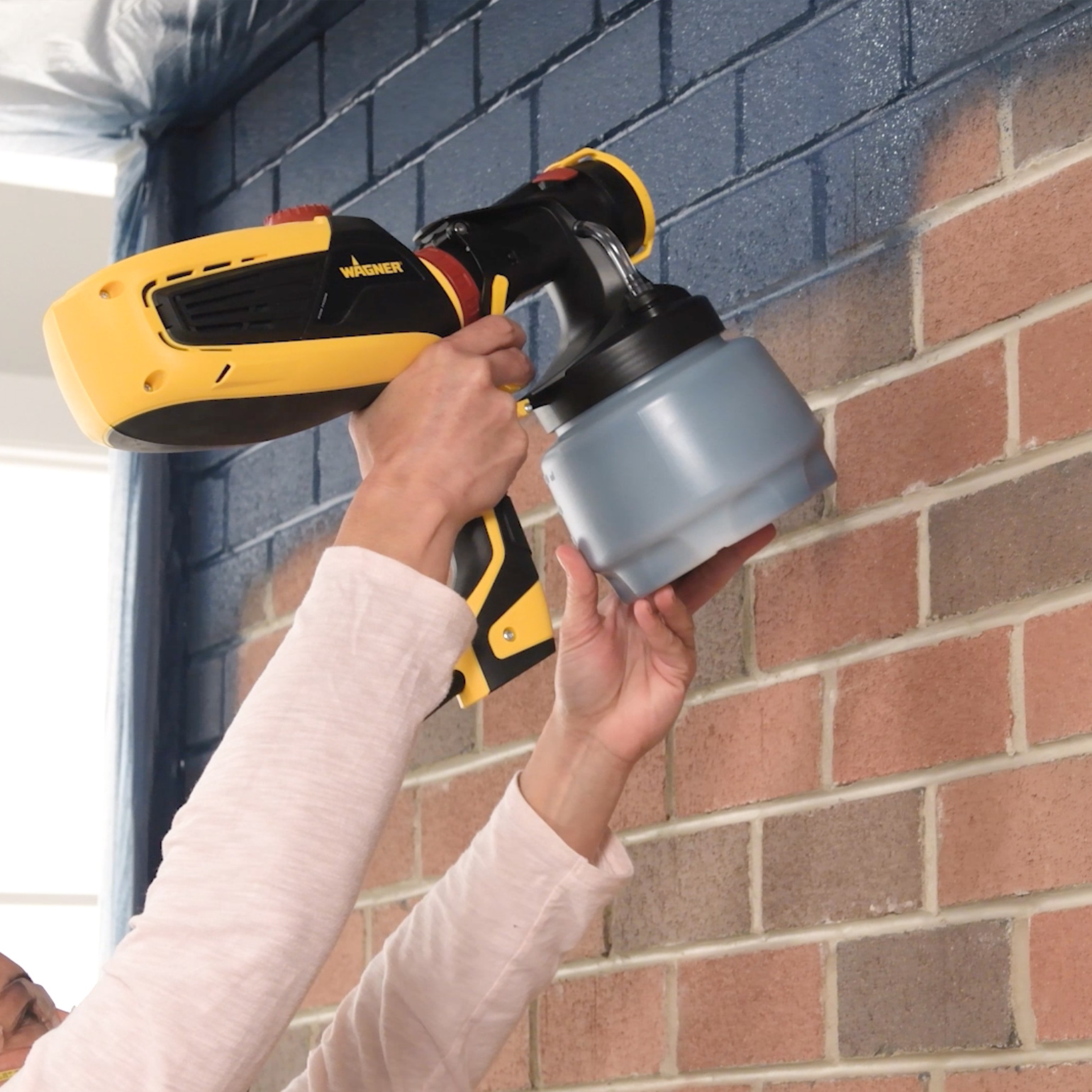
HORIZONTAL SPRAY PATTERN FOR VERTICAL PAINT SPRAYING
Change the spray pattern to horizontal for up and down spraying, this produces a wide oval-shaped spray pattern. Practice spraying with an up-and-down stroke, using the same technique you just practiced for lateral paint spraying. Now that you have a feel for how the spray pattern behaves, you’re ready to start your paint spraying project.
Step 5
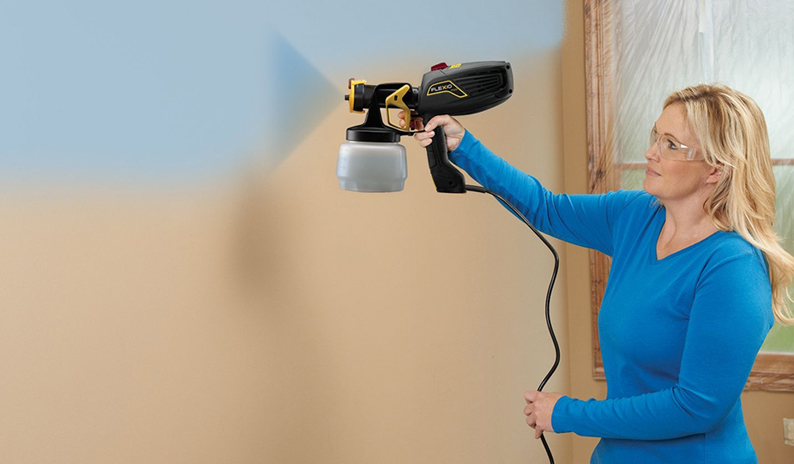
HOW TO PAINT SPRAY WALLS AND SURFACES
A base coat of primer ensures color accuracy! To ensure the color you selected in the store remains the same at home, we suggest spraying a coat of primer first, especially if you’re painting over a darker color with a lighter one. Depending how closely you have masked out windows, doors, frames, fixtures, etc., it might be easier to edge these areas out, with a brush or Wagner Edge Roller.
Pro tips for wall paint spraying efficiency:
- Shine a work light at an angle on the surface you’re painting to help you spot areas that need more paint. If you’re painting outside in bright daylight, you may not need to do this
- Start in a corner and spray in a back-and-forth motion, overlapping each stroke by about half the spray pattern on the next stroke
- Keep the gun moving at a consistent speed to avoid drips
- Brush out drips as soon as you see them and immediately spray lightly over the brush marks to cover up the brush strokes
- Have a wet towel or rag handy just in case you get paint on a surface that shouldn’t be painted
Step 6

Download Project Steps & Shopping List
We’ll never share your email with anyone else

